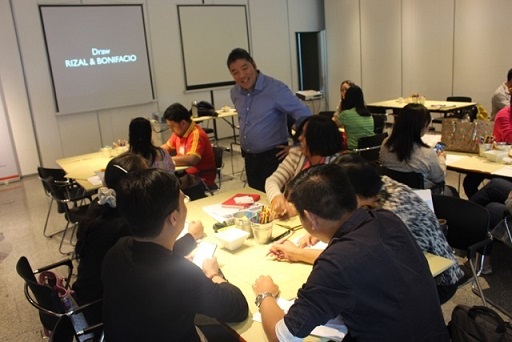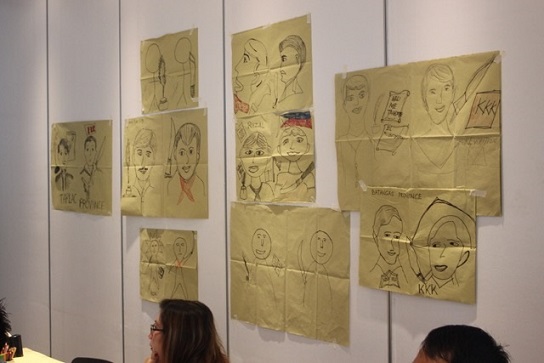By NORMAN SISON

SOME Filipino moviegoers had several questions after watching the historical film “Heneral Luna,” which ran for eight weeks. That’s a milestone for local movie standards.
Did Emilio Aguinaldo have his own commander of the then nascent Philippine Army in 1899, Gen. Antonio Luna, assassinated? Were there really women who fought as soldiers in the Philippine-American War? Have Filipinos learned anything from their history after over a century?
But it was this question from a pair of sweethearts on a movie date that got the nation talking: Why was Apolinario Mabini — the Philippines’ first prime minister and foreign minister, Aguinaldo’s chief adviser, and author of a draft Philippine constitution — seated the whole time?
When it was overheard and posted on Twitter, Epy Quizon, who played Mabini in “Heneral Luna,” was so aghast along with the rest of the country. He wondered aloud on Twitter: “What are kids being taught in history classes these days?” It was almost an indictment of the country’s educational system, history teachers in particular.
While it came as a shock for Ateneo de Manila University history professor Ambeth Ocampo, author of several books on Philippine history, he still thought that the Mabini question was understandable.
Well, to begin with, Filipinos have certain concepts of Philippine history — many of them erroneous.
In a recent workshop organized by Ayala Foundation for public school history teachers at Ayala Museum, Ocampo asked the 43 participants to draw a picture of the national hero Jose Rizal and Andres Bonifacio, the father of the Philippine Revolution.
Most of the nine drawings, at best, could’ve been easily mistaken for artwork produced by elementary school kids. But they had one common denominator: Rizal was depicted holding a quill and Bonifacio with a bolo machete.

Ocampo said actually, Rizal used a dip pen with a nib to write his two nationalist novels, “Noli Me Tangere” and “El Filibusterismo.” Bonifacio, meanwhile, was armed with a revolver. It made sense because you had to be up close and personal to hack your opponent with a bolo.
“One of the biggest mistakes is thinking that history has one answer. It’s actually just a viewpoint,” Ocampo said. Rather than just accept without question what is passed on as textbook history people should be more inquisitive, he added.
“History should teach you to be more critical, that there is more than one version of the story, that you should find the best version,” according to Ocampo, adding that new details can surface in the future as historians continue their research.
Indeed, one of the historical dioramas at Ayala Museum still narrates that the Philippine-American War broke out on the night of Feb. 4, 1899, when American troops clashed with Filipino soldiers on a bridge spanning the San Juan River.
Decades later, research revealed that the incident happened in what is now a neighborhood in Manila’s Sampaloc district, about two kilometers from the bridge. In 2004, a historical marker on the bridge commemorating the war was moved to the corner of Silencio and Sociego Streets. That incident was depicted in the “Heneral Luna” film.
Well, to be fair, Ayala Museum’s 60 dioramas opened in 1974.
Ocampo added that history can be written by the victors. To this day, official US Army records still refer to the 1899-1902 Philippine-American War as the “Philippine Insurrection,” that it was a supposed rebellion by the Filipinos against the United States’ lawful authority in annexing the Philippines as spoils following America’s victory in the 1898 Spanish-American War.

It is an accepted fact that history is a favorite subject in school that most Filipino students love to hate, leaving teachers with the assignment of how to make the subject interesting. For Ocampo, that history is considered a boring subject is precisely part of the problem. There is no such thing as a boring subject, only boring teachers.
So it was a wonder that the movie “Heneral Luna” — considering that Filipinos generally have a poor sense of history in spite of their nation’s revolutionary tradition — made Philippine cinematic history by having an eight-week run. Past local historical movies barely survived two weeks in theaters.
Ocampo doesn’t mainly credit “Heneral Luna’s” success to a miraculous surge of interest in history. For one, the movie opened at a time when there was no Hollywood or local blockbuster.
And, there was also 21st century technology — the Internet, Facebook, Twitter, Instagram and the mobile phone.
“There was social media buzz about it. It came at the right time,” Ocampo observed. “Had it come in a different time, it would’ve closed.” Initially, “Heneral Luna” appeared headed for history just on its first week — until the Internet caught fire and an online campaign petitioning theater owners to keep the movie on screens kicked off.
But, of course, there was the social message from Heneral Luna’s producers that resonated with the audience, that the problems that existed in Luna’s day still confront the country today. “In order for history to be relevant, people need to understand it in their context,” observes Ocampo.
“It doesn’t mean that people will start reading books. The challenge is how do we sustain the interest. My hope is that people will get interested enough that they will read something else afterward.”
By the way: Mabini was struck with polio in 1895 and was crippled the following year a few months before the Philippine Revolution broke out — just in case you’re among those wondering.





